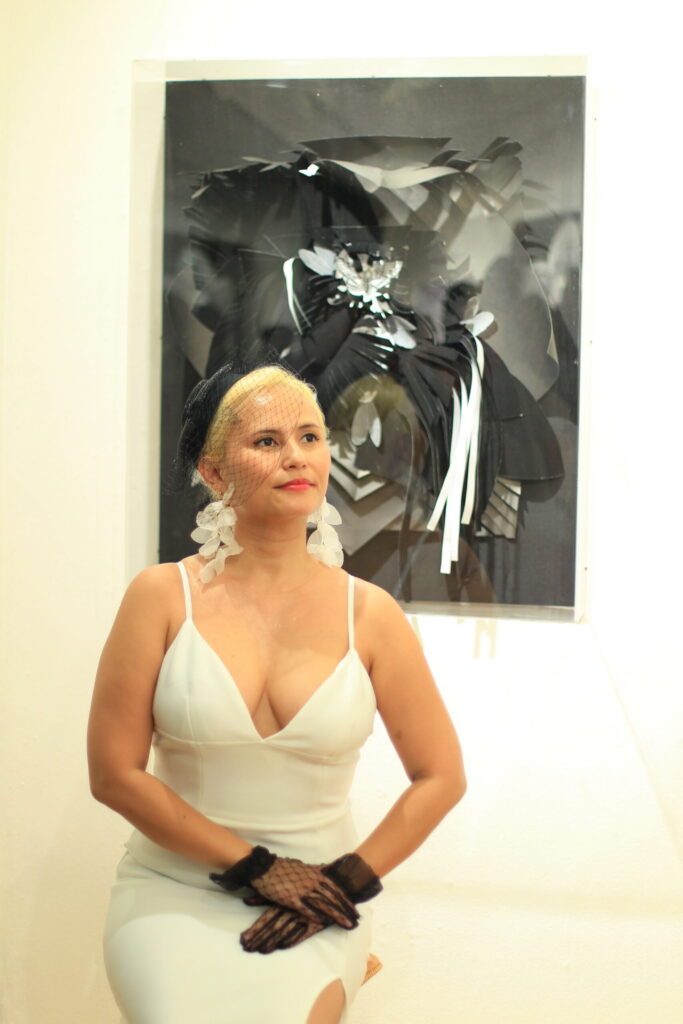The artist who is making waves that Katya is today is the latest phase in a lifelong journey that began at an early age when she began drawing characters from cartoon comics. All the while she was growing up in a home that nurtured her interest in the arts, as much as it prepared her for rigorous academic training. She read early in life, in a house filled with books.
In this second part of our interview, Katya shares with us how she made a number of choices that would lead to where she is today. But once upon a time, for all that had been given to her on a silver platter, she was in a quandary as to what to do with her life. But when she finally decided on what she wanted, there was no stopping the talented and smart girl who, it turned out, possessed an intellectual prowess not unlike those of her parents, the lawyer, and senator Edgardo Angara, whose affinity for the land had been impressed on his daughter, and the lady educator Gloria Manalang Angara, who opened up her daughter’s eyes and mind to the wonders of world literature and the other arts. And it was in art that the young girl did not only find solace but also healing.
Here is the final part of our interview:
DT: After high school, did you immediately leave for London?
KA: To be honest, and I don’t want filters here, I had mental health issues at that time. I was severely depressed. Before I went to London, I went through a tumultuous period of deciding where to go with my education. So, after Poveda, I went to Woldingham (boarding school). then I did half of my BA Psychology degree at UP Diliman from late 2000 to 2002.
I loved my time at Diliman but it was a tumultuous transitional period for me, so I decided to revisit pursuing university in London. Central Saint Martins, to be precise, is one of the most prestigious and distinguished art and design schools in the world
DT: Around what time was this?
KA: It was in 2002. I was bouncing around like I couldn’t anchor myself to one thing. Like, okay, I’m here in London already. And then, okay I’m going to study Psychology in UP. So, what’s with the leap, the sudden jump, the sudden shift? I couldn’t make up my mind. And I think that frustrated my parents for the longest time. I was also being hard on myself because I ended up causing a lot of frustration for myself. And I think that depressed me. So, you know, I’ve been diagnosed with different things. I’m bipolar. And then, I had the hallmarks of ADHD. Let’s just say that my brain works differently
DT: Well, one can never be sure about oneself.
KA: No, you can never be sure about yourself. And I was questioning myself. For the longest time, all those years I thought, what’s wrong with me? Why am I making all these strange decisions? Why am I behaving this way? Why do I react to people this way?”. You know, parang I shouldn’t be talking or reacting to people like this in this kind of situation. And I’m not just saying with family or what. But with my classmates in school.
What drew me to art was it being a place that has its own language e. It’s a place where I can express myself. Art is also a way of healing your own wounds. It’s also a way of revealing those aspects of yourself that you wouldn’t be able to otherwise.
It really was a way of healing for me. And I didn’t even know that I needed it. Because again, I was a very quiet and introverted kid. I don’t know why. I couldn’t rely on people, talk to people the way I thought, or maybe people thought I should. So, you know, I kept to myself. I’d hide away in the library every recess or lunch. I didn’t want to talk to anyone. So, that carried on until my university years.
Daily Tribune (DT): What did you finally take up in college?
Katya Angara: Well, first I just wanted to do a purely art course. So, my foundation course to get me a degree was an Art and Design course. My first choice for this was Central Saint Martins, which continues to be ranked as one of the best art and design schools in the world. I was over the moon when I made it in.
DT: What did you have to show to qualify?
KA: I needed to show my work. I had some already since I was drawing a lot in my childhood and teenage years.
DT: Your works are not the usual ones that use oil, watercolor, acrylic, and all that.
KA: I was drawing mostly. And for some reason, I have always been more of a draftsman eh. I’m always more into drawing. I have more illustrating tendencies.
DT: Like pen and paper?
KA: Yes, pen and paper. Pencil, charcoal. I’ve always had a thing for dry media and pen and ink. It’s more about the control and the precision. That’s my personality.
DT: That’s not easy ah.
KA: It’s not easy. But you have an affinity for it. And your hands have to be steady. Which is unlikely for someone with pasmado hands like me. But that’s where I find my control eh. That’s why I like it so much.
DT: So, what was it like when you showed your drawings at Central Saint Martin?
KA: So, I showed my drawings because that was required during the interview. And so I went through the ropes. They asked questions like, “why do you want to do this course here?”
DT: Your work must have been good to get you accepted.
KA: They were fine. I think it was good enough. But there was a lot I had to improve on. I only knew that once I got into the school. Then, you told yourself, Ah, oo nga pala. There was so much I had to learn. That I could be taught.
DT: How was your learning experience?
KA: From the beginning, as a child, I always copied from cartoons. And they didn’t like that. They didn’t want to see any cartoons or anything like that. They wanted to see me. They wanted to see my work. My drawing from life.
DT: So, how did you do that? It must have been challenging
KA: So, I gave them the best of my life drawings. But when I showed them my other works, they weren’t happy with them. So, I learned from that. Being young, you got a bit crushed. But then, you realize it’s a different way of thinking. It’s a different way of doing things. Okay, there’s still so much to learn in terms of art. And it’s not the be-all and end of it all. And then, they said, “This is where you should be learning from.” And they showed me art books. They said, “Go to this gallery or this museum.”
DT: How was it like living abroad? Back home, you were the daughter of a senator.
KA: Which means nothing when you’re abroad. It meant nothing. Which I actually loved. It was something that I was looking for. Because I lived in a bubble back home. To my parents’ credit naman there’s a reason for that. I was very protected. They wanted to keep me safe and secure given my father’s position. So, I’d always lived in a bubble. I’d always have bodyguards and drivers and all that. And it just felt at times a little restrictive.
DT: So, it was a welcome thing?
KA: It was a welcome thing. Really, I felt different. I felt normal na parang my family name didn’t mean a thing. And that was refreshing. I could be anything I wanted to be. I could experiment and nobody would judge. Because in schools like that and abroad, especially in Europe, they’re so open-minded. They’re so liberal.
DT: How were the teachers?
KA: Oh, wonderful. Of course, you always have your favorites, right? Very varied. Depending also on what course you were taking up, whether industrial design or sculpture which I was horrible at when I tried it. I didn’t really get close to my tutors until I moved on to my actual degree. Funny enough, instead of ending up in a practical course. Which would have been like Fine Arts, Graphic Design, or even Illustration because I love drawing. You would think that I would end up in a more practical course like Fine Arts, Graphic Design, or even Illustration, I did a complete shift and I did a theoretical course. I did Curation, Art Criticism, and Art History. So, my training is as a curator and an art critic.
DT: Wow, that was very intellectual. It’s good that you always read a lot.
KA: Yes, I think that helped because you have to read a lot. You have to love reading. You have to like doing the research. And that served me well. Who would have known, right? But if you think about it, as long as you follow what you want to do in life, it just opens up even if you don’t intentionally seek it. Somehow it just finds you It just fell into place for me in that sense. This is not what I initially set out to do. But I think you have to allow yourself to change your mind. Parang whatever happens at the time, you change with it. You adjust to it. And it worked out beautifully for me.
DT: So, were the teachers terrors?
KA: Mabait naman sila. But they have very different personalities. My course leader was a lovely older lady who was really into Victorian arts and culture. As in, Victoriana lahat. She would tell you everything about English Victorian history. And she was very passionate about it. And you know, it involved a lot of writing and research. But my favorite tutor was someone who was writing about comic books. Comic books and Pop culture. So, for me, that was a revelation because I didn’t think you could take comics books and put them in the academe. You know, academic level like intellectual. Pwede pala e. Because he showed me a way. He took me under his wing and he showed me his work and from there I learned to write. And because I love comic books. I’m actually a huge geek. I’m a nerd, I’m a dork.
DT: What was your thesis?
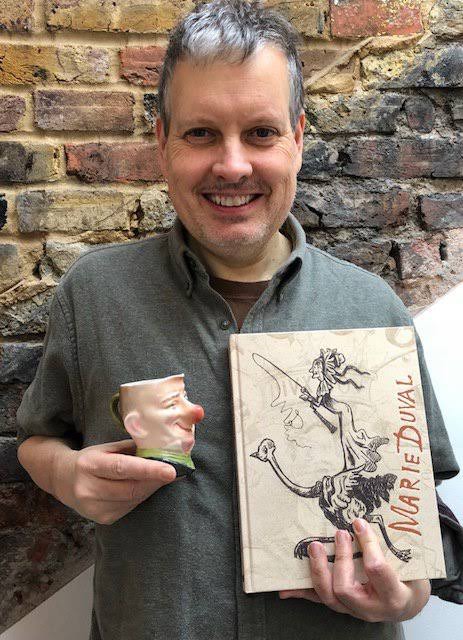
KA: Because I wanted Roger Sabin, my pop culture tutor, as my professor for my thesis, it was about a 1990s Japanese animated film called Ghost in the Shell 101. It was an animated film based on a very heavy graphic novel, a manga or Japanese comics, by Masamune Shirow. And for me, his work is revelatory. It wasn’t just the style of the Ghost in the Shell. And to think just one man could draw like this. I mean it was a very thick graphic novel. He could draw like that. And he wrote the story too. And to think you had the mental stamina to be able to write something like that and to draw.
DT: You must enjoy doing comics.
KA: Since I was a kid, I’ve made my own comic books. You know, I would sell my own comic books and people would actually buy them. I taught myself to draw in the comic book style. I learned them all. You know, there’s like Stan Lee of Marvel.
DT: You really had it in you.
KA: I had it in me. My love for comic books started by reading the ones my brother had collected over the years. He had a stash of them, so, I just devoured them. It was all very amazing to me. Kasi the drawings, the stories, these are worlds written by someone else. So, you have Marvel comics, DC comics, Dark Horse comics.
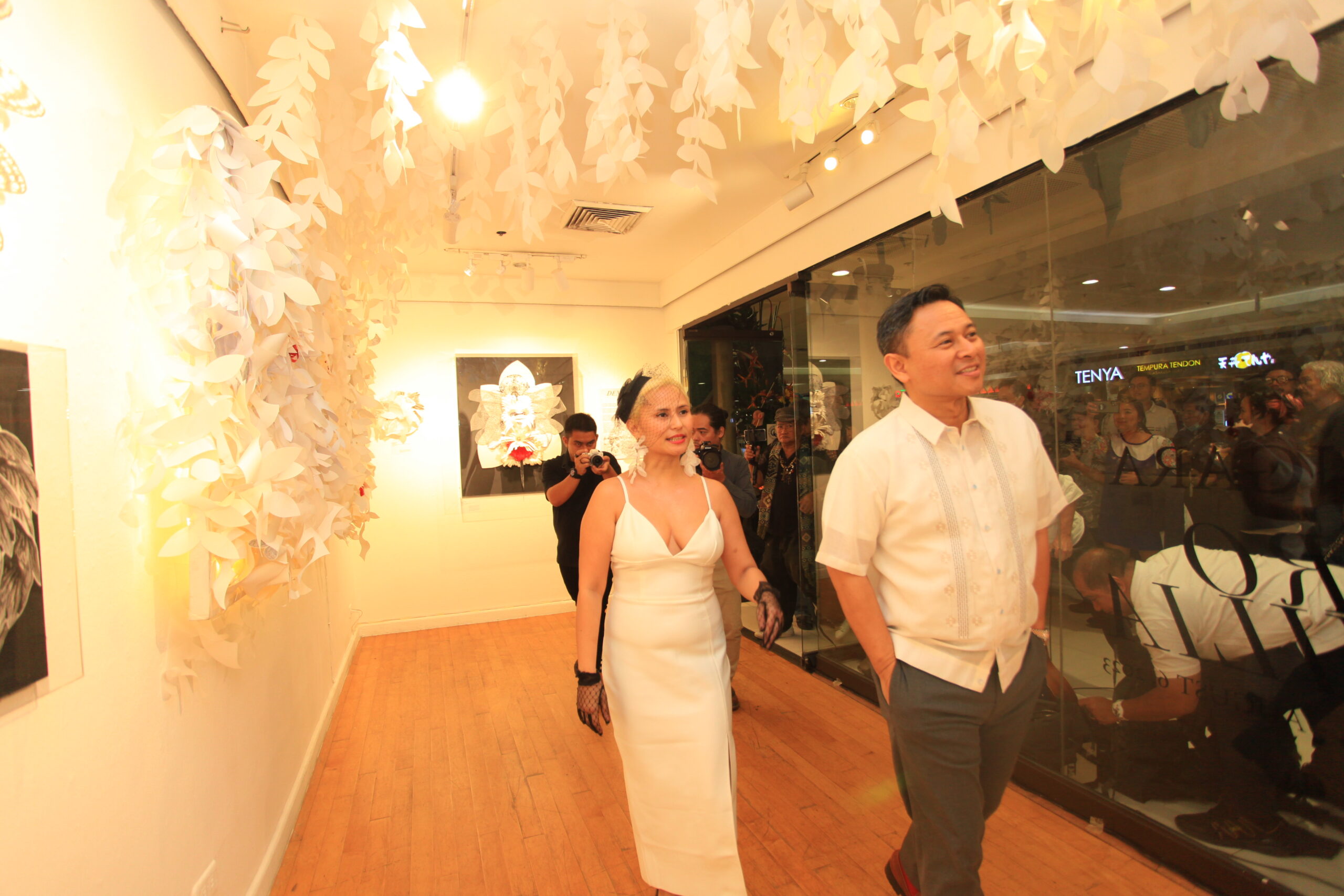
Q: You didn’t idolize anybody?
A: Well, I wasn’t particularly huge on the American comics. I think it was until I stumbled upon the Japanese comics or manga. That really piqued my interest to a degree I never felt before. Kasi it wasn’t just the style, which at first for me was very girly. I mean, I love the romantic comics. But I also felt myself leaning toward the darker stuff.
DT: What did you like about Ghost in the Shell?
KA: It’s a cyberpunk graphic novel. So, ang galing, ang ganda ng style. It was like, wow. You know, the sheer amount of detail that he puts into the drawings. I said I want to draw like this. I want to tell a story like this. But I don’t know if I was capable of telling if I had the stamina to tell something so intricate and complex.
DT: When did you graduate?
KA: In 2008. The BA in the UK is only three years. That’s why you take a foundation course. There’s a BA in Curation, and Communication, and criticism in Arts and Design.
DT: I am told that you graduated at the top of your class. But you’re not telling me.
KA: It sounds so funny kasi eh. Anyway, I graduated with first-class honors for my degree. So, basically, I was Suma Cum Laude in my batch in my year. So, that was what sealed the deal for me and my dad. Kasi for the longest time, I was kind of meandering. I was kind of flip-flopping. My mom knows this eh She goes, “You know Katya you have a tendency to be whimsical.” I am an artist eh, what can I do? Besides, I was young and I wasn’t sure. I knew what I wanted to do, which was to be in the arts but not where I wanted to go. I was asking myself if I had the stamina, the commitment, the fortitude to see it through.
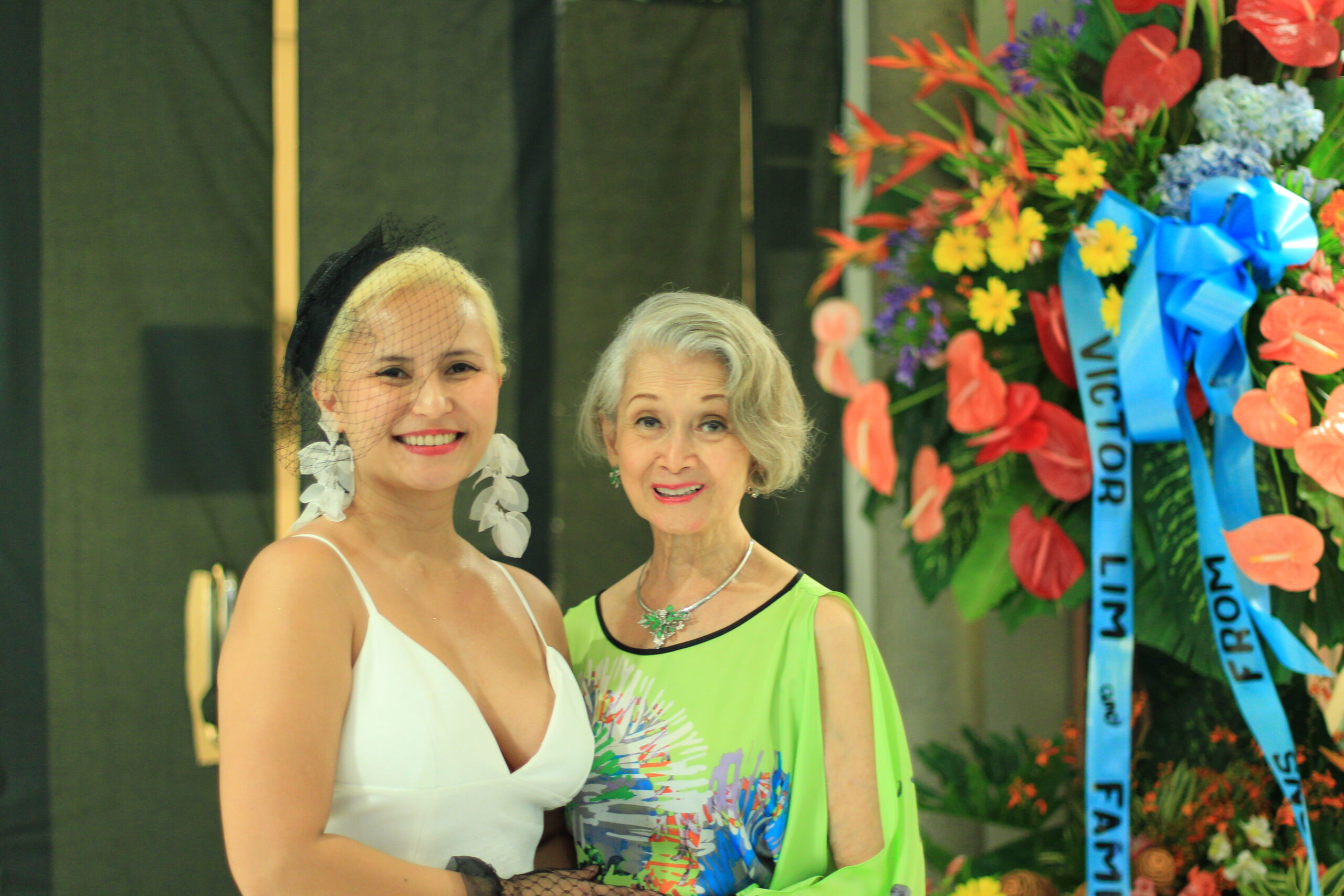
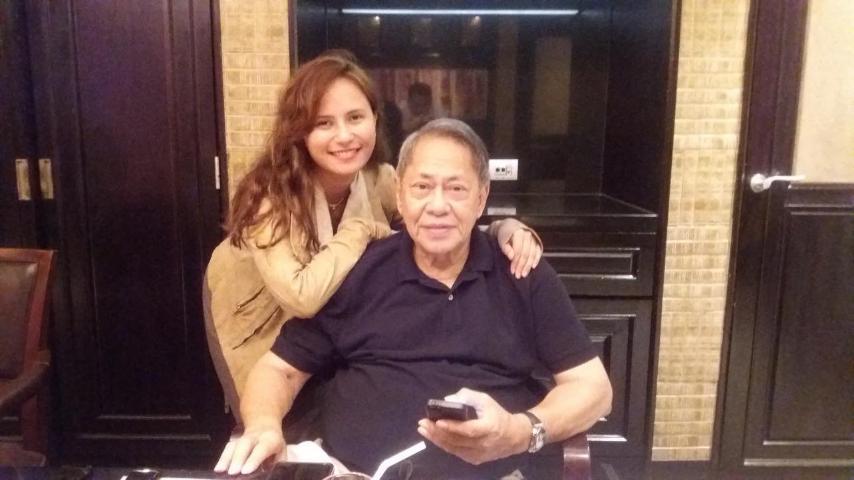
DT: College made you really bloom.
KA: Yes. It was the environment. it was the people I was with. Because I was able to go into something I really enjoyed. I wasn’t just doing homework because I was told to do homework.
I loved what I was doing. I was invested in it.
DT: What did you do after you graduated?
KA: Apart from community work, I also worked for some small galleries. I did some work for the Victoria and Albert Museum. I tried to have experiences in bigger institutions, bigger museums, and small independent galleries. I thought that experience would hone me and make me well-rounded. With the smaller galleries, I was able to practice my curatorial background. I was able to help a lot of young artists. They don’t know how to talk about their work or they’re not confident enough to do so. So anyhow, apart from helping them put together shows, I help them speak about their work. Or offer them a perspective they have never seen or thought about. And I feel that that was helping them and I think that’s where I have been able to engage with them. It was fulfilling to help them find their voice as an artist.
DT: All the while, you were all alone in London?
KA: I was married actually. To a Filipino who was born in the UK, in London. He’s an Englishman, for all purposes. It didn’t work out. We have a daughter. I had a beautiful little girl with him. She lives in London with her father. She’s been here. She lived here in her early years. After she was born in 2010, I decided to move back here. Then, after four years, we went back to London because it was what my husband wanted. He and my dad had a falling out.
DT: When was your first exhibit?
KA: Last year. Earlier, I did a group show at the Lethaby Gallery at Central Saint Martins. So, I did it with other emerging artists. My next group show was at The Crucible. But it was for a book that Sari Ortiga had commissioned me to do. He wanted to do a series of children’s books about Philippine artists. I did mine. Mine was about Anita Magsaysay-Ho. I did the illustration. It wasn’t new to me because I had been making my own books. I would staple them myself. Although up until that point I didn’t know how to really do it professionally. I found out it could be lucrative and fulfilling. This was in 2008 when I didn’t have a daughter yet.
DT: Tell me about your forthcoming show. (The current show had yet to be opened). What paintings are you showing?
KA: They’re not paintings, they’re not just drawings. They’re an amalgamation. They’re what you call a compendium of everything I’ve ever done as an artist. The book illustration, and then I dabbled a bit in black-and-white photography. I like the look of black and white photography. So, I do it with my phone or a simple camera. It’s also good for taking reference photos for my work. Because if you can’t sit in the park drawing people or objects, or subjects, the next best thing is you take pictures. And you can draw from those pictures. Kaya maganda siya for reference. So, my work is that, actually.
DT: So, what about your subjects?
KA: Well, I’m a very central person. We live in a very conservative culture. And I have subjects that would make people say ay, you know, you shouldn’t talk about that. So, there’s no filter, it’s very raw, very natural. In London, I was able to talk to people about things like BDSM or Bondage Sado-Masochism. And you know, that can get a bad rap. Because if you do it wrong, it would look strange to anyone who is not familiar with it. Among the Japanese, there is a subculture that does that.
DT: Do they consider BDSM an art form?
KA: There’s a particular Japanese artist whose work I used to admire. He’s a photographer. And his subject is BDSM. There were pictures of women tied up and then there were flowers and reptiles. So it was very sexual. I found myself drawn to that because there’s the element of the dark side. Carl Jung, the psychoanalyst, talked about how we have to make our unconscious conscious. The darkness in us is unconscious. And if you don’t make your darkness conscious, it’s going to come out in other ways at some point. Meaning to say, you shouldn’t repress those sides of you. I think it is a side that’s intertwined with the creative side of me. I can’t be an artist without being sensual. Without that aspect, all that would be macabre. Which brings me to my mom again. She used to chide me for reading Stephen King when I was a kid. I’m a huge Stephen King fan. She was like, “It’s so macabre, so dark.” And I’m like, “I like it, I like his work.” He’s such a skilled writer. And I like how he could take something so mundane and make it terrifying and frightening on all levels.
Stephen King said that he writes two thousand words every morning. I’m not sure if I can do that. I wanted to write na rin eh because the natural partner of my art is my writing. Because as a curator, I didn’t just read. I had to write a lot. And that’s where I honed my skills. Kasi siyempre, it’s a sword that you have to sharpen every now and then. So, for the show. I did a lot of writing. I did my own writing.
DT: While we’re on the talk of artists, what about the Filipino artists? Who among them do you admire? Do you have any mentors and idols?
KA: Among Philippine artists, Junyee is my second father and my first artistic mentor. He is my OG sage and shaman of Philippine art, the Father of Philippine Installation Art. I’m actively lobbying for him to become National Artist soon, as no one deserves it more than he does, with his magnificent oeuvre. I’ll always remember how, in a fleeing moment of impostor syndrome, he consoled me by saying that making art for myself always comes first. Love the process and the rest follows. The maverick attitude is very Junyee! And yet, he lives a modest life in the forest-like setting of his home in Los Banos, echoing the nature-loving ethos of our favorite Japanese animator, Hayao Miyazaki, creator of Toroto, Nausicaa, Spirited Away, among many other magical films. Since I was a child, Junyee saw my potential and continued to push me to have my own gallery shows, as did his longtime friend and one of my other mentors, Sari Ortiga. Sari’s daughter Yasmin is a good friend and batchmate of mine from Poveda. Sari owns and runs the distinguished Crucible Gallery, and he hired me to illustrate one of the children’s books for his series “Growing up with Philippine art” in 2009. It’s thanks to Sari that I pushed myself to evolve as an artist, to grow outside of my comfort zone.
The acclaimed visual artist and sculptor Jinggoy Buensuceso is something of a bad boy du jour of the Philippine art scene, and his dissident attitude is something I can identify with. I love the unorthodox, the sensual, the macabre, the dark stuff that delves deep into the psyche. I’m so bored of the “covers” or “riffs” of the countless Amorsolo, Basquiat, Picasso, or Rothko-type artworks that I see so much of in the local art scene. As wtih Junyee and Sari, Jinggoy has taught me how to navigate the perilous seas of art and life, echoing Junyee’s advice to remain myself, in a world that often pushes us to be someone else. My three mentors, by example, taught me how to be original.
DT: How many are you exhibiting? How many works?
KA: Now, I have 9 complete pieces. I’d like to add another one. Honestly, medyo cramming ito because I only had two months to do the show. Normally for this kind of work – especially with the big piece I am doing – it’s a seven-foot piece. I would need, preferably to be comfortable, at least four to six months to do all this work. Kasi, there is so much nicer when you give it time to compost. To come together, to become fertile.
DT: Is there enough time for one more work?
A: Yes. I have one more work that I want. Because I feel that it rounds it up eh. If I do ten, I love the work that I’ve already done. Again, it’s not a painting, it’s a collage. So, I’d call it a photographic collage with paper cuttings on canvas. I wanted to treat canvas in a way that is not painting
DT: Shouldn’t someone curate for you?
KA: For now, I’m happy to have to do it myself. Because I feel that I’m the only one who can portray myself in a way that I feel I should be portrayed. Kasi it’s art eh. You’re trying not so much to explain yourself as you’re trying to convey who you are to somebody without being obvious. That’s art.
DT: Where does Stephen, your partner, come in?
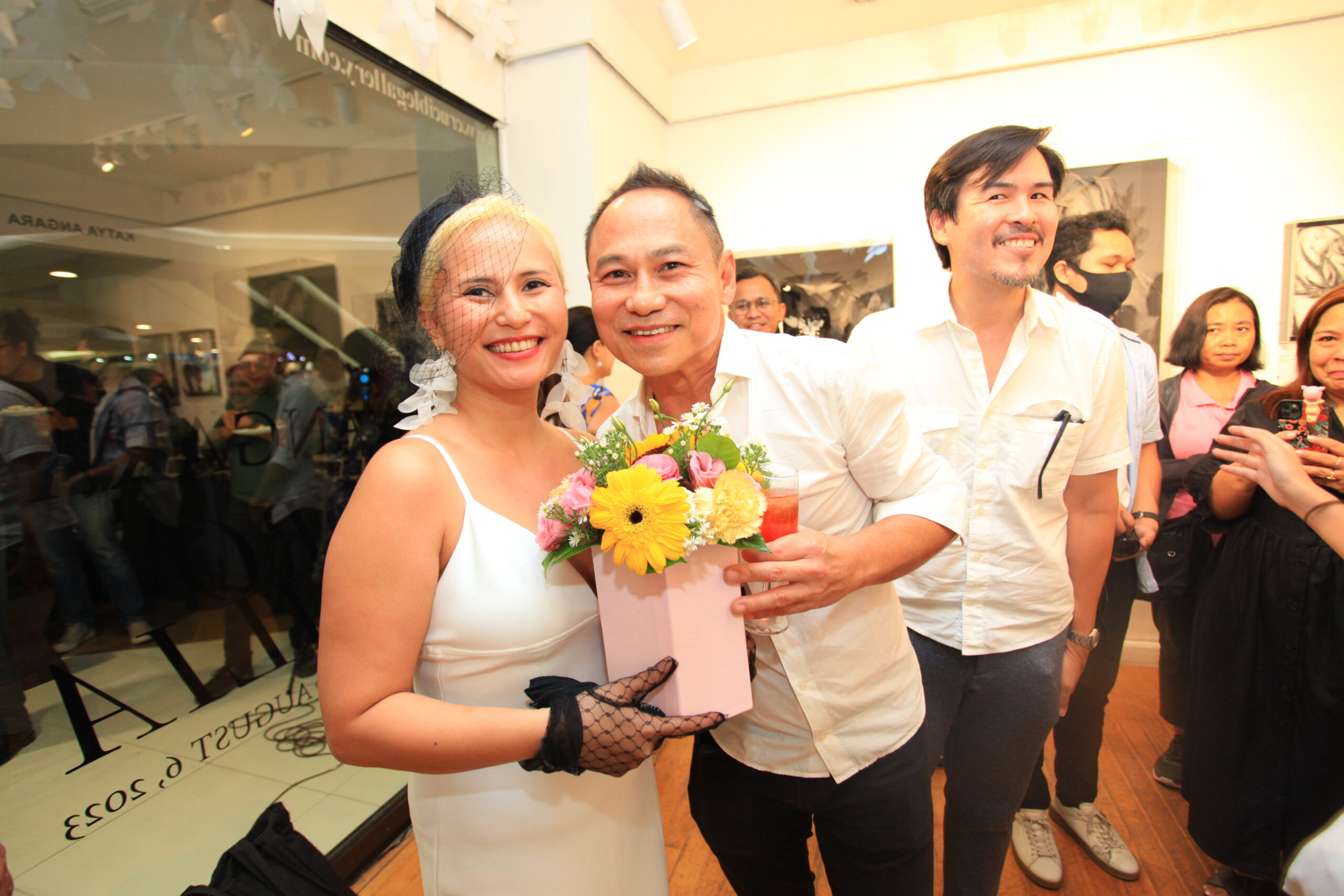
KA: Stephen is somewhat of an anchor for me. So, I feel comfortable, I feel more confident when he’s around. But I guess I’m okay.
DT: Now, as we wind up, let’s talk about how you are like your parents and not like them. You said that your interest in the arts came from the exposure that you received from your mother, and of course, the presence of books at home. Tell me more about your father’s role in your becoming the person that you are.
KA: One of my fondest memories of my father was his love of nature, gardening, and farming, which I learned from him. He was at his best and calmest when he was at his farm in Nasugbu and Baler.
Whilst my father was a “man of the soil”, I learned to be an “artist of the soil”, a gardener who applies the principles of nature to my art. Hence the overlying themes of nature in my oeuvre of artwork.
And the most resonant themes of philosophy (which my father also studied and applied in his life) are the themes relating to lessons learned from nature: patience, fortitude, temperance. From this I’ve become more acutely aware of life’s transience, making our time all the more precious, being grateful for small and simple pleasures, and the opportunities that come my way.
The naïveté of my younger years meant that I didn’t have a complete grasp of the opportunities presented to me by my father, I took much for granted. Now I see why he did what he did, he gave me the tools to be able to achieve my full potential. Only now that I’m embracing that fire and heading in a direction that makes the most of my talents.
I had impostor syndrome for the longest time. Always questioning and doubting myself. Now I can fully embrace who I am and it is cathartic.
DT: In what way are you like them?
KA: I have the different strengths of my parents. I’ve inherited their academic minds and cultured tastes, with an eye for detail and beauty.
I have many mannerisms and behavious in common with my mum, in terms of poise and self-possession. But, she is like Audrey Hepburn and I am infinitely more of a Marilyn Monroe. Marilyn was also a very private person and something of a poet and writer.
I guess it’s no surprise that I am drawn to art and writing; I am highly introspective, painfully self-aware and attuned to my moods and to the moods of others; like my Dad, I’m intuitive and know how to read people.
DT: My last question is, how has art influenced you in your direction in life? And where are you going from here?
KA: Being an introvert, I don’t always translate into easy social interactions with most people. So I channel it all into my art. It’s a language that best expresses my psyche, thoughts, and emotions. Working with my hands is healing and consolation for the isolation, depression, and anxiety attacks that grip me on bad days. That’s why as an artist of the soil, gardening and art go hand in hand.
In the future, I can see myself tending to the land and becoming a farmer as my father was. It’s like coming home.
